The future of California’s Central Valley, a region on the frontlines of climate challenges that will soon face communities everywhere, depends on the choices leaders make today about land use, river flows, groundwater pumping, and economic development. In this briefing, local leaders provide a window into current challenges and offer solutions for a livable region in 2040. Zoom recording found here. Notes here.
Water is the way a lot of climate challenges show up in the Central Valley. -Nicole Lampe
Dr. Angel Santiago Fernandez-Bou, Environmental Systems Engineer and Researcher at UC Merced and President of the SocioEnvironmental and Education Network (SEEN) discussed how the Central Valley went from a humid region with rivers and wetlands to a dry region with sprawling agriculture lands in less than 200 years. He noted that the changing climate leads to less surface water for irrigation and farmers needing to pump more groundwater, which is being overtapped and drying wells in neighboring towns. Fernandez-Bou’s research includes a study of how farmland conversion can provide multiple benefits including better job opportunities than currently exist. He shared the CA climate assessment of the San Joaquin Valley which is available in English and in Spanish. “We’re developing a tool to help decision makers with cropland repurposing decisions. Agriculture can be key to fight climate change, same for aquifer recharge. Repurposing croplands around disadvantaged communities is a promising approach (from large farm to solar farm, wildlife corridors/wildlife habitat, clean industries, aquifer recharge, regenerative agriculture, or public-private partnerships).”
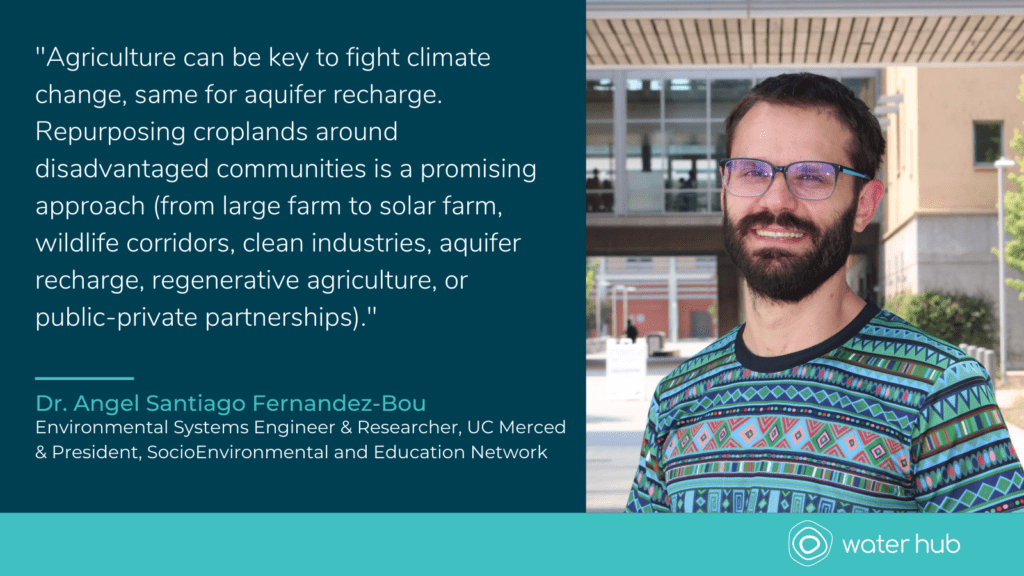
Uriel Saldivar is a Senior Policy Advocate at Community Water Center (CWC), an environmental justice organization in the San Joaquin Valley working to deliver on the Human Right to Water for all Californians through education, organizing, and advocacy.. He explained how drought and groundwater overpumping are impacting Central Valley residents that rely on wells as their only water source. Just last year, 1,000 household wells went dry, forcing families to rely on hauled in water for drinking, cooking, cleaning and more . Given these facts, Uriel and the CWC team applauded the governor for taking historical action to protect groundwater from over pumping but are pushing for more to be done to fill policy gaps and provide long-term solutions. “We’re excited to introduce a critical piece of legislation, AB2201 by Assembly Member Bennett is the Community Drinking Water Protections Act and will ensure that groundwater use is aligned with long term sustainability goals while protecting drinking water supplies by requiring GSAs approve well permits. The permits require alignment to local sustainability plans and a notification framework for groundwater users within a mile.”
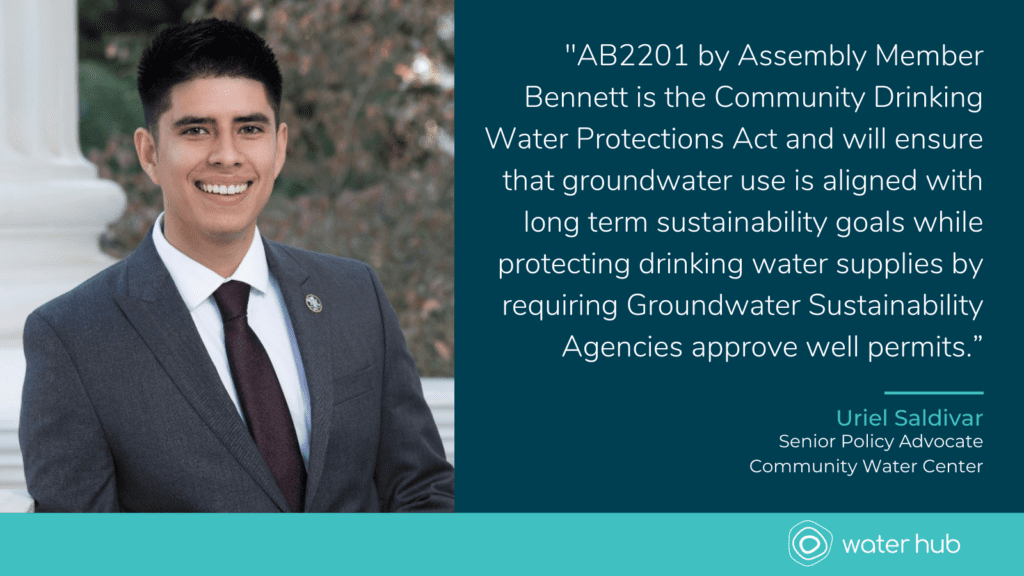
Denise Kadara, Vice Chair of the Central Valley Regional Water Board and President of Allensworth Progressive Association shared the incredible history of Allensworth (formerly known as a mini Black Wall Street) including the once-upon-a-time freshwater lake and the change of water rights from community allocation to agricultural domination. She noted that when domestic wells go dry, communities are in crisis and there’s no immediate fix except for bottled drinking water which adds another pollution problem. While current issues facing the water board include drought, flooding, groundwater supply, and failing infrastructure, Denise was excited to share the board’s vision for Allensworth and the future of the Central Valley. “Allensworth is updating its community plan based on resident identified community priorities. TAC farm will address community food needs and create economic opportunity. Colonel Allensworth State Historic Park will feature a 7 mile trail connecting to the local wetlands that will generate ecotourism and agritourism. Allensworth will become a model for self sustaining climate adaptive communities.”
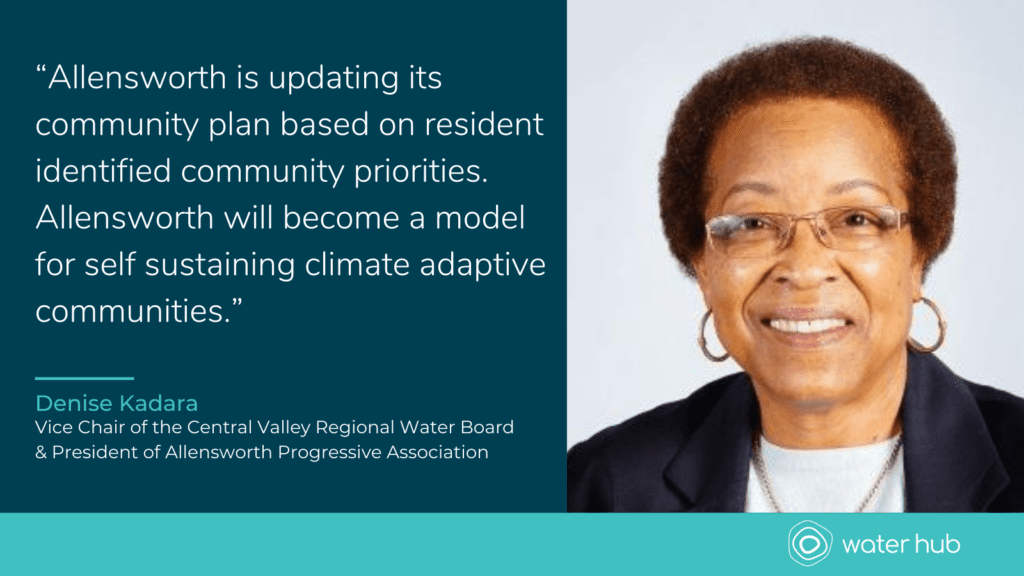
Nataly Escobedo-Garcia is a Policy Coordinator at the Leadership Counsel for Justice & Accountability, a nonprofit focused on both groundwater and land use and development that impacts California’s low income, rural regions. Nataly pointed out that land repurposing is part of the solution for the future of the Central Valley if it means the lands that get transitioned out are actually those large farms that have caused the issues of over pumping. She also advocated for the farmworkers who would lose their jobs when agricultural land is transitioned or fallowed in the Central Valley, noting that we need to take care of the workers as well as the owners, and engage communities in planning future development. “The [land repurposing] focus has been exclusively on compensating farmers. No discussion of what happens to farmworkers. The discussion on how we transition farmworkers is critical as they lose employment, fallowing will be important for protecting groundwater but it’s equally important that farmworkers are transitioned into another economy or at minimum included in the discussions on what the next steps are for the San Joaquin Valley.”
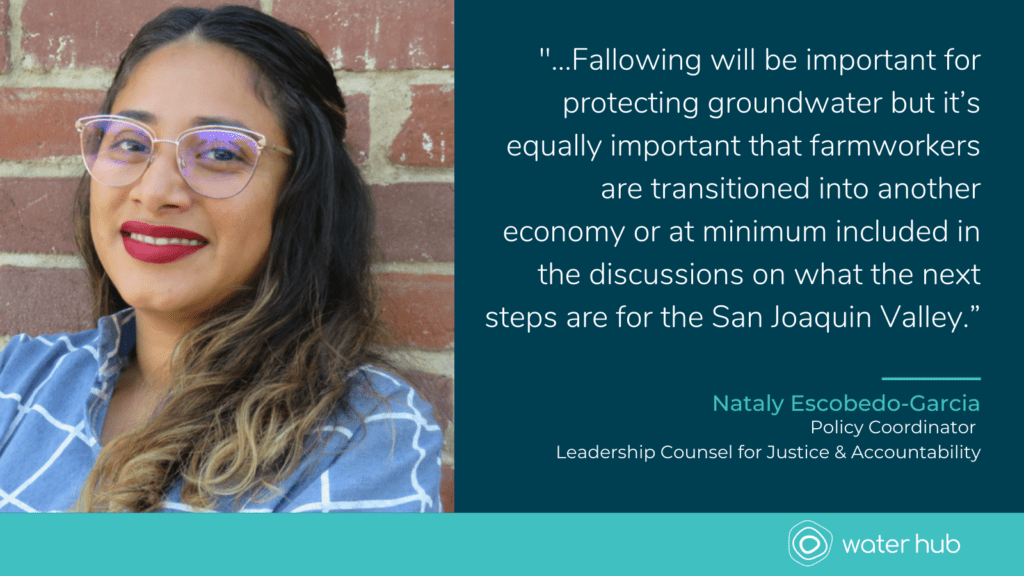
Dennis Hutson is the co-founder of TAC Farm in Allensworth which uses regenerative, sustainable agricultural practices to help build the local economy while providing healthy food and education for other farmers. Dennis shared his approach to climate-smart farming, noting the importance of windbreaks and having pollinators and living organisms in the soil, as well as partnering with others to perfect a composting system. “I believe in the future there will be less flood irrigation practices. Smaller farms where there is more nurturing of the farm and soil. We have moved from small farms to huge agribusinesses but we see that isn’t working and we will go back to smaller farms. Where it is more sustainable. Possibly there will be more co-ops farms where we’re working together instead of competing and solving all the environmental problems we’re currently experiencing.”
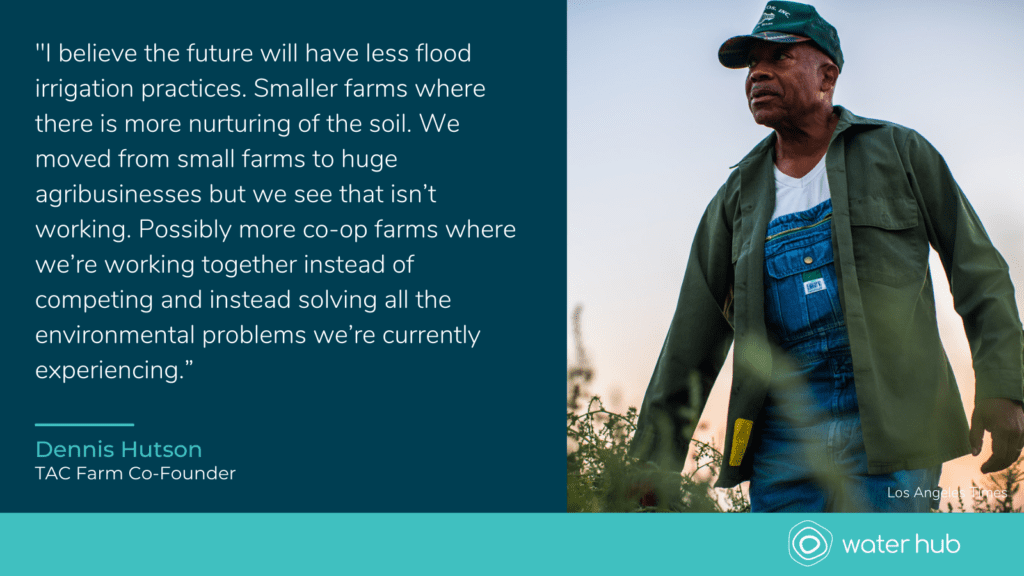
From stronger groundwater laws to climate-smart farming and more, the future of California’s Central Valley is multidimensional and multi-beneficial. There are climate solutions that can help bring California into our climate reality and protect our human rights to clean air, soil, and water! Climate mitigation clearly requires an all hands on deck approach and these panelists helped paint a holistic bigger picture for the future of the golden state, most importantly a future that includes our disadvantaged communities who are at the frontlines of climate change.
To stay in the loop on water in California, upcoming trainings, and more sign up for our newsletter.